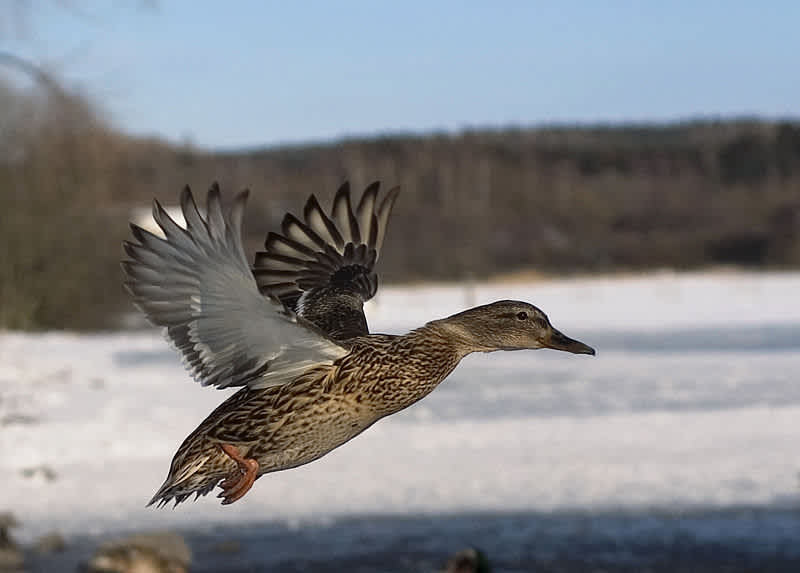Biologists Puzzled Over Why Anchorage’s Mallard Ducks Shun Migration
OutdoorHub Reporters 02.18.14

Alaska’s wild ducks, such as its Mallards, generally fly south during the winter. Biologists are puzzled why hundreds or even thousands of the ducks stay in Anchorage every year during the season, surviving mostly on the charity of humans. According to KTUU, the Alaska Department of Fish and Game recently began a new study into why—and how—the birds can survive in Anchorage’s frigid winter.
“This is not a natural situation by any means,” said Fish and Game waterfowl expert Mike Petrula.
Wildlife biologists found upwards of 600 Mallards in midtown Anchorage, trapping about 30 of the animals to be tagged and tested for disease. For bait the researchers used cracked corn and barley, a departure from the ducks’ usual diet of bread. These wild birds have found one way to adapt to the shortage of food during winter: the generosity of park visitors. Anchorage park-goers feed the birds an assortment of foods that they generally do not encounter in the wild. Most of the offerings are bread, but there is also the occasional bird seed, some melon slices, and even pizza.
The Department of Fish and Game discourages feeding ducks, which can lead to bad dietary habits and promote disease in closely-packed populations. Although humans seem to provide the only source of food for ducks in Anchorage, biologists speculate that the ducks could eek out a meal on their own.
It is not unusual for ducks to be found in rough, northern environments. According to The Alaska Dispatch, thousands of ducks overwinter north of Kachemak Bay, Prince William Sound, and even Fairbanks. Surveys by the Anchorage Audubon Society also found as many as 3,351 ducks in the city in past winters, and that is considered a conservative estimate.
So why do these ducks stay? Biologists say they are unsure why this phenomenon happens. Could it be that the ducks are avoiding migration just for a few pieces of stale bread?
“Frankly, we don’t have all the answers,” Petrula said.
Petrula intends to capture and band several hundred ducks this year. That number will provide an adequate sample of how the ducks move around Anchorage, where they feed, and whether they will fly south next winter. Researchers also question if the same birds return every year, and where the females nest. The study is expected to take place both in the winter and summer for the next several years.

